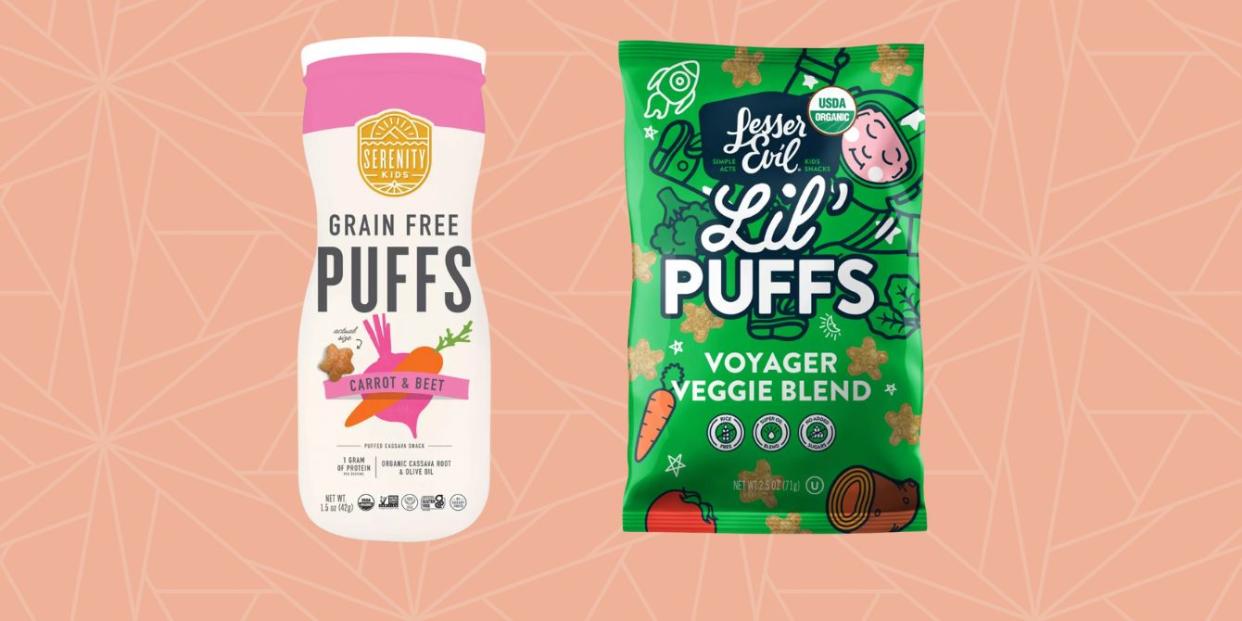‘Concerning’ levels of lead found in popular brands of puffs—what parents need to know

According to new findings released this week by Consumer Reports, some popular veggie puffs brands contain “concerning levels of lead” and other heavy metals linked to developmental and other disabilities in children.
Puffs are usually seen as a healthy and delicious alternative to most snacks marketed to children, especially veggie puffs. But certain cassava-based brands have excessive amounts of lead or other heavy metals, making even a single serving unhealthy in the case of one product, according to Consumer Reports.
Lesser Evil and Serenity Kids make puffs with other starches as the main ingredient, including cassava or sorghum. Both are gaining popularity as a way to avoid grains (cassava is a root) or gluten (sorghum is a gluten-free grain).
The levels of arsenic, mercury, and cadmium found in the puffs were not high enough to pose “significant risks,” CR says. But the levels of lead found are troubling, to say the least. Lesser Evil’s Lil’ Puffs Intergalactic Voyager Veggie Blend puffs had more lead per serving than any of the 80 baby foods CR has tested since 2017.
“We think kids should consume less than half a serving a day of those,” says James E. Rogers, PhD, head of food safety testing at CR.
While many toddlers are known to consume an entire container of puffs in one sitting if given the chance, Rogers says the serving sizes for puffs in general is smaller than most parents realize. A half-serving of Lesser Evil’s Lil’ Puffs Intergalactic Voyager Veggie Blend is just 17 puffs. A container of Serenity Kids puffs holds just 1 ½ ounces, and the label says it contains six servings.
“Clearly, some manufacturers need to do a better job of keeping heavy metals out of their snack foods, and there may be some particular concerns about foods made with cassava,” Rogers says.
While the Food and Drug Administration recently proposed limits for lead and other heavy metals in some categories of baby and toddler food, snacks weren’t included. Last year, the agency unveiled the new guidelines as part of its Closer to Zero action plan, which works to reduce children’s exposure to heavy metal toxins found in food, including lead, arsenic and cadmium.
Even low levels of lead exposure in young children can be harmful, as the guidelines explain, noting that lead exposure during early childhood has been linked to developmental delays, learning disabilities and behavioral difficulties. “Because lead can accumulate in the body, even low-level chronic exposure can be hazardous over time,” the guideline authors state.
“The agency needs to take a hard look at the snacks parents feed their children, and make sure they don’t have dangerous levels of lead and other contaminants,” Rogers says.


